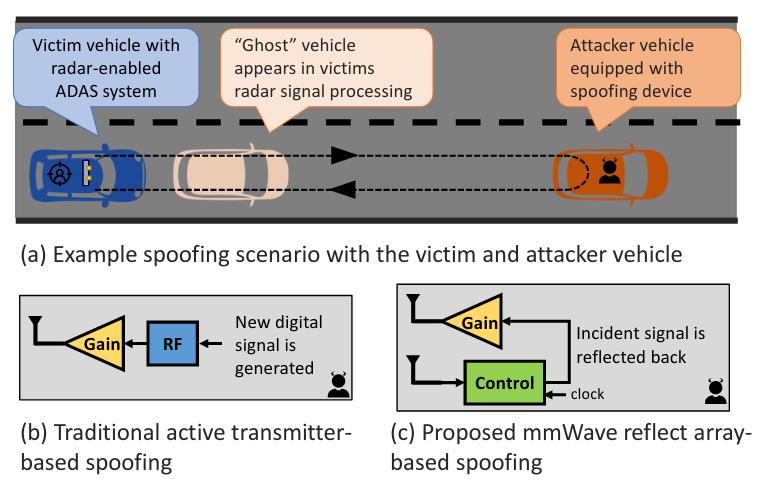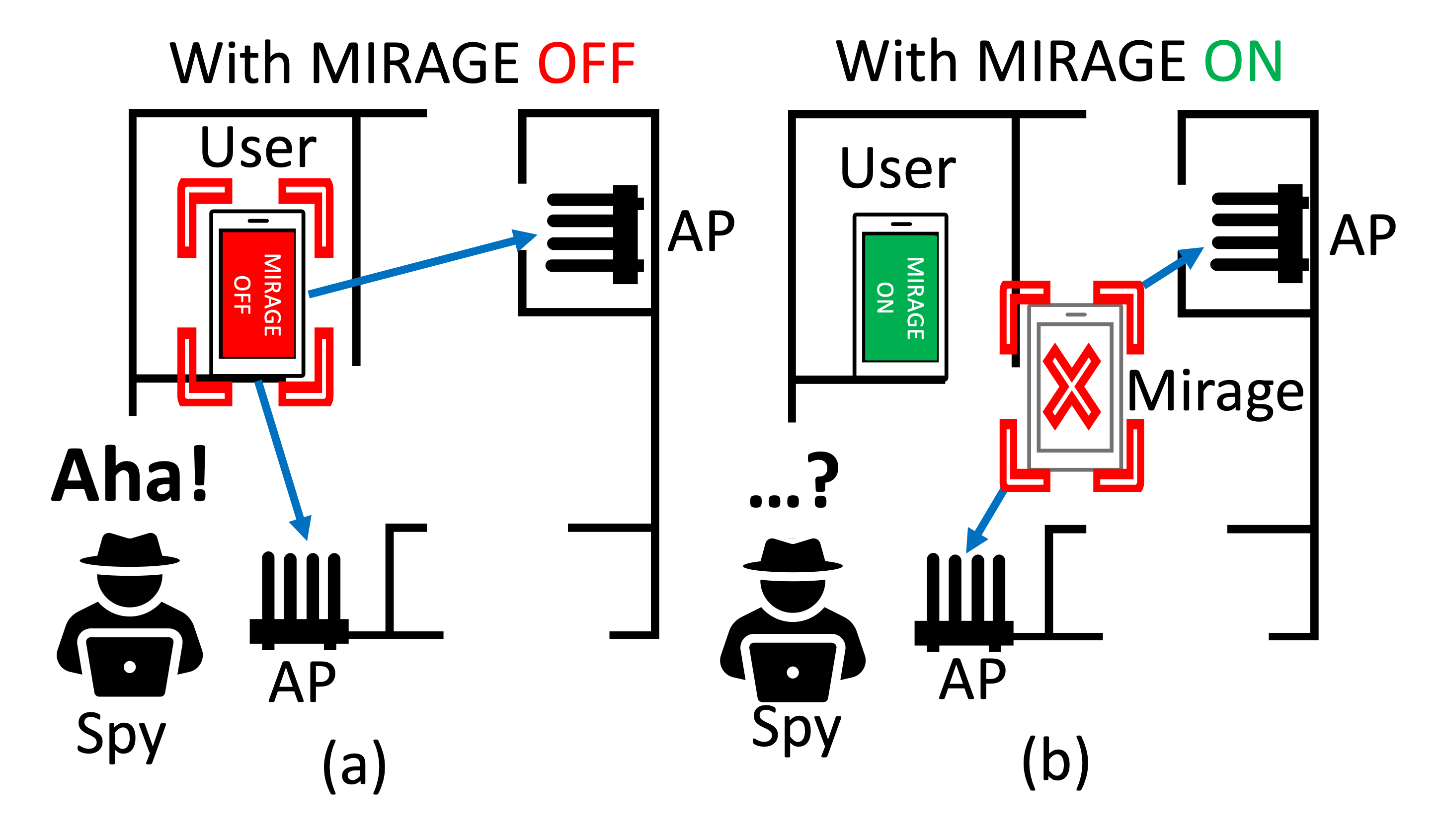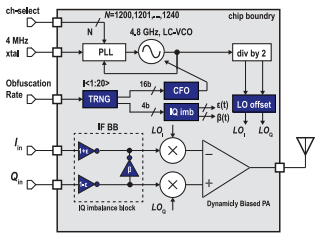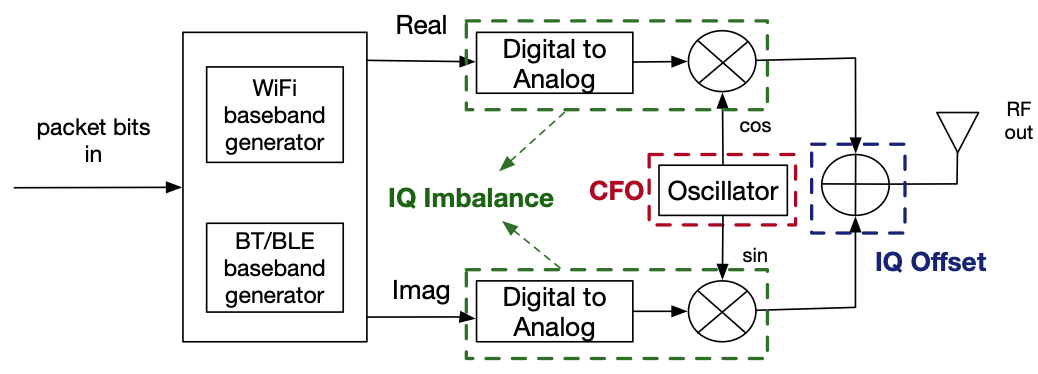Security and Privacy
Overview
Our research towards securing the wireless infrastructure for both communications and sensing. We demonstrated several types of attacks such as Spoofing, Jamming, Obsfurcation, and provacy-preserving localization system. We developed algorithm to detect hidden IoT devices even when they are not connected to any wireless network, by detecting their unique Emanation signatures, protect against BLE location attack, and spoofing automototive radars.
Publications

Hadi Givehchian, Nishant Bhaskar, Alexander Redding, Han Zhao, Aaron Schulman, Dinesh Bharadia

Rohith Reddy Vennam, Ish Kumar Jain, Kshitiz Bansal, Joshua Orozco, Puja Shukla, Aanjhan Ranganathan, Dinesh Bharadia

Roshan Ayyalasomayajula, Wei Sun, Aditya Arun, Dinesh Bharadia

Ali Nikoofard, Hadi Givehchian, Nishant Bhaskar, Aaron Schulman, Dinesh Bharadia, Patrick P. Mercier

Hadi Givehchian, Nishant Bhaskar, Eliana Rodriguez Herrera, Héctor Rodrigo López Soto, Christian Dameff, Dinesh Bharadia, Aaron Schulman
Open Source Code and Datasets
Team





